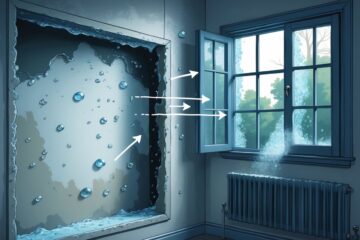Decorating a buy to let property can significantly enhance its appeal to potential tenants and ultimately boost your rental income. A comprehensive buy to let decorating checklist will not only ensure your property looks attractive but also help you avoid costly mistakes. By focusing on the essentials, you can create a welcoming environment that meets both aesthetic and functional needs.

Understanding the unique aspects of the buy-to-let market is crucial as it influences how you prepare and decorate your property. You’ll need to consider the demographics of your target tenants and the kind of features that make a property desirable. With a clear decorating plan, you can make informed choices that align with your investment goals.
Each step, from essential repairs to finishing touches, plays a vital role in preparing your property for tenants. With the right approach, you can transform your space into a rental that stands out in a competitive market while ensuring it remains cost-effective and durable.
Key Takeaways
- Create an effective decorating plan tailored to your target market.
- Prioritise essential repairs to maintain property value.
- Focus on aesthetics that attract quality tenants.
Understanding the Buy-to-Let Property Market

The Buy-to-Let property market offers both opportunities and challenges for landlords. It is essential to understand the key considerations before decorating and explore effective renovation tips to maximise your investment returns.
Key Considerations Before Decorating
Prioritise functionality and durability when decorating your rental property. Tenants seek spaces that are not only aesthetically pleasing but also easy to maintain.
Important factors to consider:
- Tenant Demographics: Understand the target audience. For instance, students may prefer more affordable, functional spaces, while professionals might look for modern aesthetics.
- Neutral Colours: Opt for neutral paint colours. This approach appeals to a wider range of tenants and makes the space feel larger.
- Durable Materials: Select furnishings and flooring that withstand wear and tear, reducing maintenance costs in the long run.
Recognising these elements can significantly enhance the attractiveness of your property while ensuring your investment remains in optimal condition.
Buy-to-Let Renovation Tips
Renovations can increase property value and attract quality tenants. Employ cost-effective decorating strategies that reflect current trends without overspending.
Effective renovation tips include:
- Focus on Key Areas: Concentrate on the kitchen and bathroom. Upgrading these spaces can yield high returns.
- Budget Wisely: Assess your renovation budget carefully. Prioritise necessary work over luxury upgrades.
- DIY Where Possible: You can save costs by handling smaller tasks yourself. Painting, landscaping, and minor repairs often fall within the capabilities of most landlords.
- Energy Efficiency: Consider energy-efficient features. Items such as LED lighting and improved insulation may attract eco-conscious tenants.
By implementing these strategies, you will enhance your property’s appeal while maintaining a sensible budget.
Establishing a Decorating Plan

Creating a suitable decorating plan is crucial for optimising your rental property’s appeal without overspending. Focusing on budget-friendly approaches and tenant-friendly improvements will enhance both functionality and aesthetics.
Creating a Budget-Friendly Plan
Start by determining a clear budget that allows for essential updates without straining your finances. Consider allocating funds for key areas such as paint, furnishings, and decor items.
Budget Breakdown:
- Paint and Wallpaper: £200-£300
- Furniture: £500-£1000
- Accessories/Decor: £100-£200
Research cost-effective materials and look for sales or second-hand options. Prioritise essential repairs and touches that can increase rental value and tenant satisfaction.
Remember to keep track of your expenses through a spreadsheet to ensure you stay within your limits. This method also helps you spot areas for adjustment if costs start to rise.
Tenant-Friendly Home Improvements
When making improvements, opt for changes that appeal to prospective tenants while being easy to reverse or modify. Neutral colour schemes are often a safe choice as they cater to varied tastes.
For example, consider:
- Temporary Wallpaper: Easy to apply and remove.
- Removable Shelf Units: Offers extra storage without commitment.
- Secondary Glazing: Improves energy efficiency and comfort.
Maintenance is key; ensure that updates leave minimal long-term obligations for you while still enhancing the living environment.
Creating a welcoming atmosphere can significantly reduce vacancy periods, making these improvements not only practical but beneficial for your rental strategy.
Rental Property Interior Design Principles
Focus on creating a cohesive and functional design that appeals to your target market. Consider the layout and flow of each room to maximise space efficiency.
Choose durable and easy-to-clean materials, especially for high-traffic areas. Options like laminate flooring or vinyl tiles are excellent due to their resilience and aesthetic appeal.
Keep decor simple and uncluttered. Incorporating elements such as large mirrors can create a sense of openness, making spaces feel larger.
Remember, practical design enhances tenant satisfaction and retention, which can significantly impact your rental success.
Essential Repairs and Maintenance

Maintaining a rental property is crucial for tenant satisfaction and long-term investment value. Essential repairs must be identified and addressed promptly to ensure a safe and comfortable living environment.
Rental Property Maintenance Checklist
A thorough maintenance checklist helps you stay organised and proactive. Consider these critical items:
- Safety Checks: Ensure smoke alarms, carbon monoxide detectors, and fire extinguishers are functional.
- Plumbing: Inspect for leaks under sinks, check water pressure, and ensure the heating system is working.
- Electrical Systems: Test all outlets and install GFCI outlets where necessary.
- HVAC Systems: Clean or replace filters regularly and check for inefficiencies.
- Exterior Maintenance: Inspect roofs, gutters, windows, and doors for damage or wear.
Regularly referring to this checklist can help you prevent larger issues and maintain tenant trust.
Prioritising Essential Repairs
Identifying which repairs are essential can save time and resources. First, focus on areas that impact safety and habitability.
- Structural Issues: Address any signs of water damage, mould, or instability in walls and foundations.
- Heating and Cooling: Ensure that the heating system is operational, especially in colder months, to maintain tenant comfort.
- Pest Control: Write a plan for regular inspections and treatments to prevent infestations.
- Aesthetics: While less urgent, cosmetic repairs can enhance appeal and potentially increase rental value.
By prioritising these repairs, you can ensure that your property meets legal standards and remains attractive to potential tenants.
Prepping Your Property for Tenants

When preparing your rental property for tenants, attention to detail is crucial. Ensuring a well-decorated and compliant space enhances appeal and tenant satisfaction.
Landlord Decorating Checklist
Start with a fresh coat of paint. Neutral colours like beige or light grey appeal to a broader audience. Ensure that walls are free from marks and scuffs.
Next, check the flooring. Repair any damage or consider replacing worn carpets. If using laminate or tiles, ensure they are clean and free of stains.
The furniture should be in good condition. If furnished, opt for practical, durable pieces. Likewise, window treatments should allow sufficient light while maintaining privacy.
Don’t overlook the garden or outdoor space. Ensure it is tidy and presentable, providing potential tenants with an inviting first impression.
Safety Standards and Compliance
Safety is paramount in any rental property. Start by ensuring all gas appliances are checked and certified by a qualified engineer annually. Display the Gas Safety Certificate prominently.
Electrical safety is also critical. Have an electrician perform an inspection and issue an Electrical Installation Condition Report (EICR) to confirm safety standards are met.
Smoke alarms and carbon monoxide detectors must be installed and functional in key areas. Regular checks will ensure compliance.
Lastly, keep all documentation organised and accessible. Providing clear compliance certifications fosters trust and reassures tenants about their safety.
Finishing Touches and Aesthetics
Attention to detail can significantly enhance the appeal of your rental property. By focusing on the finishing touches and ensuring a cohesive aesthetic, you can attract high-quality tenants and maintain property value.
Adding Value through Detailing
Small elements can make a big difference in how a space feels. Consider these decorative ideas to elevate your property:
- Crown Moulding: Adds sophistication and elegance to plain ceiling lines.
- High-Quality Fixtures: Use stylish taps and handles to modernise kitchens and bathrooms.
- Coordinated Colour Schemes: Choose a consistent palette for walls, furnishings, and accessories for a harmonious look.
- Textured Fabrics: Incorporate cushions and throws to create warmth without overwhelming the space.
These details not only promote a welcoming atmosphere but also give the impression of quality, enhancing your appeal to prospective tenants.
Balancing Durability with Style
It’s essential to select materials that endure the wear and tear of rental life while maintaining aesthetic appeal. Focus on the following:
- Furniture Selection: Choose pieces upholstered in stain-resistant fabrics or materials that can withstand heavy use, such as leather or synthetic alternatives.
- Practical Flooring: For high-traffic areas, choose vinyl or laminate options. These are easy to maintain and come in various appealing designs.
- Wall Treatments: Consider washable paint or removable wallpaper that adds character but can be easily refreshed.
Striking the right balance between durability and style ensures your property maintains its charm throughout the rental period.
Frequently Asked Questions

When decorating a buy-to-let property, various factors come into play. Understanding responsibilities, costs, and trends can help ensure successful outcomes that appeal to potential tenants.
What considerations should a landlord make when decorating a buy-to-let property?
You should consider durability, maintenance, and aesthetics. Choose materials that withstand wear and tear while being easy to clean. Neutral colours generally appeal to a broader audience, making it easier to attract tenants.
Are landlords responsible for the cost of decorating a rental property?
Yes, landlords usually bear the cost of decorating a rental property. This includes initial furnishing and any necessary maintenance between tenancies. You may also need to redecorate during a tenancy if it’s part of your rental agreement.
What cost-effective decorating strategies can landlords employ for rental houses?
Cost-effective strategies include using paint instead of wallpaper, opting for durable furniture, and focusing on key areas like kitchens and bathrooms. You can also source second-hand or discounted items to keep costs down while maintaining quality.
How frequently should a landlord redecorate a tenanted property to maintain standards?
A good rule is to redecorate every 5 to 7 years or when tenants change. Regularly assess the property’s condition to determine if a refresh is needed sooner, especially if there are visible signs of wear.
What type of decorating themes appeal universally to tenants?
Neutral, contemporary themes tend to attract a wide range of tenants. Styles such as minimalism or Scandinavian design are popular for their simplicity and ease of maintenance. Implementing practical layouts with modern fixtures is also key.
Is there an optimal number of bedrooms to focus on for a buy-to-let property?
Properties with two to three bedrooms are often the most appealing. This site caters to various tenant types, from young professionals to small families. Focusing on this range can maximise your rental yield while ensuring tenant demand.


